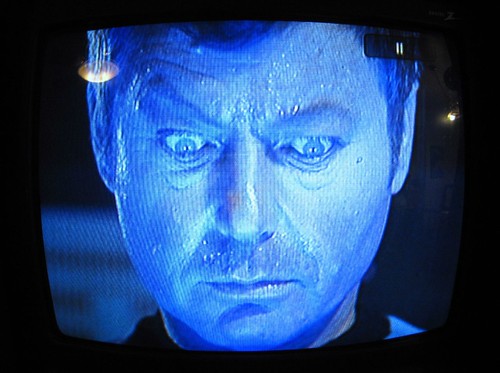Now you too can Save Spock's Brain!

Dr Robert White, Professor of Neurosurgery at Case Western Reserve University in Ohio, believes such operations may be possible one day in the not too distant future. Here he explains why:
Read Dr White's guide to performing brain transplants Is human brain transplantation here or is it in the future?
There have been experiments in highly developed animals such as monkeys where the brain has been successfully transplanted. In one set of investigations the brain was retained in the skull and the head and transplanted to a new monkeys body successfully.
Should this form of operative technology be undertaken in humans?
Unfortunately under present circumstances the spinal cord must be severed and thus the brain that is transferred would have no neurological control over the body, or vice-versa.
Who would benefit today from this type of transplantation?
Obviously only those already paralysed from the neck down from spinal injuries. Someday it is hoped that the spinal cord can be rejoined. This would mean the transplanted brain would be able to control the body and also receive sensation from it. Obviously major immunological problems remain, resulting in tissue rejection.
While it appears that the brain maybe immunologically privileged this of course would not extend to the tissues of the head, and thus further work must be done to solve the problem of tissue rejection.
The Operation: Human Soul Transplantation
To think in terms of an operation for human brain transplantation anatomically the procedure should be considered a total 'body transplant'.
Therefore we should begin with the concept of where and how the body would be obtained. As present, any potential patient would be quadriplegic, an individual paralysed from the neck down.
They have no feeling or movement in their body, and unfortunately may face multi-organ failure, which in a short period of time would bring about death.
The 'donor' body would be obtained from a healthy brain dead individual, for example from a severe accident in which the trauma was exclusively directed to the head and brain. Thus, a clinically diagnosis of 'brain death' would be given, and the organs in the body would only remain alive by respiratory assistance, and a heart lung machine.
How to perform a human brain transplant in 11 easy(ish) steps Professor White says the procedures for such an operation would be as follows:
- The two 'patients' would be transferred to a specially designed operating room, equipped with apparatus for total body, human brain transplantation.
- Two teams of specially trained surgeons, nurses, scientists and technicians are on hand. This is because the two patients will be operated on simultaneously.
- Both patients will have to have a series of devices to monitor their brain and body activities during the operation. This will include brainwave, heart and blood monitoring. The most important measurement will be that of the brain.
- The operation in both patients is directed at the neck. The incision encompasses the entire neck with surgical division of all the tissues of the neck, including skin and muscles. A stage is reached in the operation where only the arteries, veins and spine remain.
- Bony vertebral elements of the spine at both the front and back are removed over several segments, exposing the spinal canal with its spinal cord and coverings. Metal plates are affixed to the remaining spine with screws above and below the area of absent bone. These will be used to fasten the spine together at the time of transplant.
- The surgery on the blood vessels is the most dangerous part of the operation. This is because to be transplanted, the brain can only be without its blood supply for an extremely short time. Therefore 'Loop' catheters are filled with a substance to prevent blood clotting, and are introduced into each blood vessel in the patient, to enable vascular transfer to be carried out.
- Since the blood vessel transfer is the most concerning part of the procedure a specially designed piece of equipment has been made available. This mechanically supports the brain circulation, or can cool the brain very rapidly to temperatures in the region of 12°C. This protects the brain for periods of over one hour if the blood circulation is completely cut off.
- The loop catheters are now arranged so that the blood circulation is passed from the donor body to the recipients head. The donor body now supplies the circulation to the recipient head. The spinal cords are divided and the recipient brain and head are transplanted to its new body. Its body is now used as a transfusion source.
- Both spines are fused together with the metal plates. The loop catheters carrying the blood supply are individually removed as the blood vessels are sewn together. If necessary the brain can be supported by the special instrument to provide it circulation or to cool it during these essential procedures.
- Now all the tissues of the neck wound are sewn together including the skin, and the brain transplanted patient is moved into a specially equipped intensive care unit. Great concern will remain in the area of tissue rejection, infection and circulatory support. Appropriate medications will be required. Also this patient will require permanent respiratory support and artificial feeding.
- When consciousness is regained we would expect that the patient's brain would function normally. They should be able to hear, see, taste, smell and think, and their memories should be totally intact. They can be instrumented for speech.
Comments